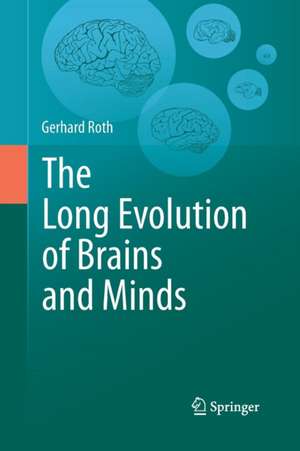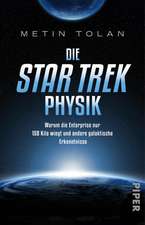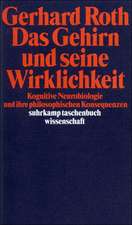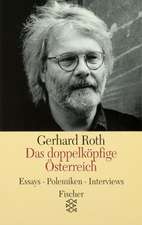The Long Evolution of Brains and Minds
Autor Gerhard Rothen Limba Engleză Paperback – 16 iul 2015
| Toate formatele și edițiile | Preț | Express |
|---|---|---|
| Paperback (1) | 945.90 lei 6-8 săpt. | |
| SPRINGER NETHERLANDS – 16 iul 2015 | 945.90 lei 6-8 săpt. | |
| Hardback (1) | 1008.21 lei 6-8 săpt. | |
| SPRINGER NETHERLANDS – 14 iun 2013 | 1008.21 lei 6-8 săpt. |
Preț: 945.90 lei
Preț vechi: 1153.54 lei
-18% Nou
Puncte Express: 1419
Preț estimativ în valută:
180.100€ • 197.22$ • 152.52£
180.100€ • 197.22$ • 152.52£
Carte tipărită la comandă
Livrare economică 23 aprilie-07 mai
Preluare comenzi: 021 569.72.76
Specificații
ISBN-13: 9789400796065
ISBN-10: 9400796064
Pagini: 340
Ilustrații: XVII, 320 p. 55 illus., 23 illus. in color.
Dimensiuni: 155 x 235 x 18 mm
Greutate: 5.15 kg
Ediția:Softcover reprint of the original 1st ed. 2013
Editura: SPRINGER NETHERLANDS
Colecția Springer
Locul publicării:Dordrecht, Netherlands
ISBN-10: 9400796064
Pagini: 340
Ilustrații: XVII, 320 p. 55 illus., 23 illus. in color.
Dimensiuni: 155 x 235 x 18 mm
Greutate: 5.15 kg
Ediția:Softcover reprint of the original 1st ed. 2013
Editura: SPRINGER NETHERLANDS
Colecția Springer
Locul publicării:Dordrecht, Netherlands
Public țintă
Popular/generalCuprins
Mind and Intelligence.- What is evolution?- The mind begins with life.- The language of neurons.- Bacteria, archaea, protozoa: successful life without a nervous system.- The “invertebrates” and their nervous systems.- Invertebrate cognition and intelligence.- The Deuterostomia.- The brains of vertebrates.- Sensory systems – the coupling between brain and environment.- How intelligent are vertebrates?- Do animals have consciousness?- Comparing vertebrate brains.- Are humans unique?- Determinants of the evolution of brains and minds.- Brains and minds.
Recenzii
From the reviews:
“The author examines in detail the structural/functional differences in the ring nervous systems of Cnidaria, diffuse nerve nets of bilateria, and the complex invertebrate brain of cephalopods (especially octopus), among others. … This book is highly recommended for anyone with research agendas in comparative neuroscience, evolutionary neuroscience, cognitive science in general, and philosophy of mind.” (Paul Tibbetts, The Quarterly Review of Biology, Vol. 88, December, 2013)
“The author examines in detail the structural/functional differences in the ring nervous systems of Cnidaria, diffuse nerve nets of bilateria, and the complex invertebrate brain of cephalopods (especially octopus), among others. … This book is highly recommended for anyone with research agendas in comparative neuroscience, evolutionary neuroscience, cognitive science in general, and philosophy of mind.” (Paul Tibbetts, The Quarterly Review of Biology, Vol. 88, December, 2013)
Textul de pe ultima copertă
On the basis of evolutionary and behavioral biology, neuroscience and anthropology, this book investigates to which extent it is possible to reconstruct the evolution of nervous systems and brains as well as of mental-cognitive abilities, in short “intelligence”, and to which extent we can correlate the one with the other. One central question is, whether or not abilities exist that make humans truly unique, or whether the evolution of the human mind was a gradual process. Exactly which neural features make animals and humans intelligent and creative? Is it absolute or relative brain size or the size of “intelligence centers” inside the brains, the number of nerve cells inside the brain in total or in such “intelligence centers” decisive for the degree of intelligence, of mind and eventually consciousness? Which are the driving forces behind these processes?
Here, many different answers exist. For some experts the driving force for brains and minds are the conditions for biological survival: the more complex these conditions, the more effective need to be sense organs, nervous systems and brains, and the stronger is the tendency to an increase in learning abilities, behavioral flexibility and innovation power of animals. This is the ecological intellicence hypothesis. Other authors believe that the true driving force is the challenge from social life of an animal: the more complex the social conditions, the more sophisticated are abilities such as social learning, imitation, empathy, knowledge transfer, consciousness and the development of a theory of mind and meta-cognition. This, again, needs progressive changes inside the brains. This is the social intelligence hypothesis. Again other authors distinguish physical intelligence as a third form of cognitive functions mostly related to tool use, tool fabrication and understanding of the principles of how things work. Finally, some expertsbelieve that the decisive factor in the evolution of brains and minds consisted in an increase in the speed and efficacy of information processing in cognitive brain centers. This is the general intelligence or information processing hypothesis. It is discussed, which of these hypotheses is the most convincing one. At its end, the book deals with the eminent question of whether we can arrive at a naturalistic concept of mind and consciousness. Is it possible to explain mind and intelligence within the framework of the natural science, or do mind and intelligence as found in humans, transcend nature?
Here, many different answers exist. For some experts the driving force for brains and minds are the conditions for biological survival: the more complex these conditions, the more effective need to be sense organs, nervous systems and brains, and the stronger is the tendency to an increase in learning abilities, behavioral flexibility and innovation power of animals. This is the ecological intellicence hypothesis. Other authors believe that the true driving force is the challenge from social life of an animal: the more complex the social conditions, the more sophisticated are abilities such as social learning, imitation, empathy, knowledge transfer, consciousness and the development of a theory of mind and meta-cognition. This, again, needs progressive changes inside the brains. This is the social intelligence hypothesis. Again other authors distinguish physical intelligence as a third form of cognitive functions mostly related to tool use, tool fabrication and understanding of the principles of how things work. Finally, some expertsbelieve that the decisive factor in the evolution of brains and minds consisted in an increase in the speed and efficacy of information processing in cognitive brain centers. This is the general intelligence or information processing hypothesis. It is discussed, which of these hypotheses is the most convincing one. At its end, the book deals with the eminent question of whether we can arrive at a naturalistic concept of mind and consciousness. Is it possible to explain mind and intelligence within the framework of the natural science, or do mind and intelligence as found in humans, transcend nature?
Caracteristici
First book with thorough analysis of relationship between evolution of nervous systems and evolution of intelligence Competent discussion of the mind-body problem in the context of brain evolution Strong arguments against uniqueness of human brain and mind













